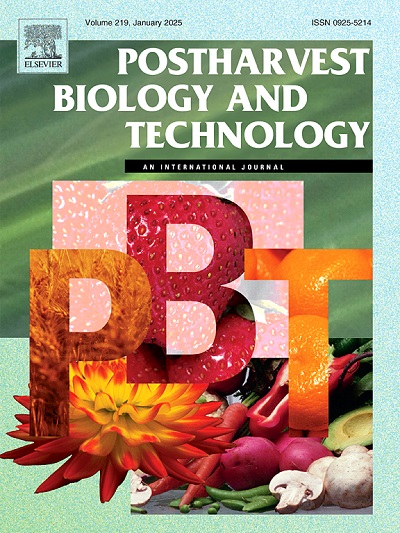Multi-target of capric acid against Botrytis cinerea infection in postharvest grape
IF 6.4
1区 农林科学
Q1 AGRONOMY
引用次数: 0
Abstract
Botrytis cinerea critically undermines postharvest grape sustainability through rapid conidial dispersion and pectinase-mediated tissue maceration, resulting in annual economic losses exceeding $ 10 billion globally. This study establishes capric acid as a novel biocontrol agent demonstrating dual antifungal and resistance-inducing activities. At the cellular level, capric acid disrupted B. cinerea membrane integrity and induced reactive oxygen species (ROS) burst, accompanied by mitochondrial dysfunction through peroxisome-associated gene downregulation and impaired TCA cycle efficiency. Multi-omics integration revealed system-level reprogramming in treated grapes: (1) Antipathogenic effects: Suppression of fungal survival pathways; (2) Host metabolic activation: Enhanced phenylpropanoid biosynthesis and ROS-scavenging enzymes. Practical application in postharvest trials exhibited significant quality preservation: reduction in decay rate, lower weight loss, and maintenance of soluble solids versus controls. The multi-target mechanisms spanning pathogen inhibition (membrane disruption, mitochondrial distress) and host priming (secondary metabolite induction, redox homeostasis) position capric acid as a sustainable phytoprotection strategy for grape postharvest systems.
癸酸抗葡萄采后葡萄灰霉病的多靶点研究
灰葡萄孢通过快速的分生孢子分散和果胶酶介导的组织浸渍严重破坏葡萄采后的可持续性,导致全球每年经济损失超过100亿美元。本研究确定了癸酸作为一种新型的生物防治剂,具有抗真菌和诱导抗性的双重活性。在细胞水平上,正丁酸破坏灰绿杆菌膜完整性,诱导活性氧(ROS)爆发,并通过过氧化物酶体相关基因下调导致线粒体功能障碍,破坏TCA循环效率。多组学整合揭示了处理葡萄系统水平的重编程:(1)抗病原作用:抑制真菌存活途径;(2)宿主代谢激活:增强苯丙类生物合成和活性氧清除酶。在采后试验中的实际应用显示了显著的质量保存:与对照相比,降低了腐烂率,降低了重量损失,并保持了可溶性固体。从病原菌抑制(膜破坏、线粒体胁迫)和宿主启动(次生代谢物诱导、氧化还原稳态)的多靶点机制看,己酸是葡萄采后系统中可持续的植物保护策略。
本文章由计算机程序翻译,如有差异,请以英文原文为准。
求助全文
约1分钟内获得全文
求助全文
来源期刊

Postharvest Biology and Technology
农林科学-农艺学
CiteScore
12.00
自引率
11.40%
发文量
309
审稿时长
38 days
期刊介绍:
The journal is devoted exclusively to the publication of original papers, review articles and frontiers articles on biological and technological postharvest research. This includes the areas of postharvest storage, treatments and underpinning mechanisms, quality evaluation, packaging, handling and distribution of fresh horticultural crops including fruit, vegetables, flowers and nuts, but excluding grains, seeds and forages.
Papers reporting novel insights from fundamental and interdisciplinary research will be particularly encouraged. These disciplines include systems biology, bioinformatics, entomology, plant physiology, plant pathology, (bio)chemistry, engineering, modelling, and technologies for nondestructive testing.
Manuscripts on fresh food crops that will be further processed after postharvest storage, or on food processes beyond refrigeration, packaging and minimal processing will not be considered.
 求助内容:
求助内容: 应助结果提醒方式:
应助结果提醒方式:


